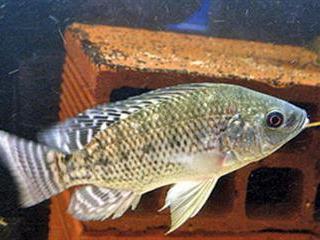
At first glance, it seems a no-brainer. The red form of an improved strain of Nile tilapia seems to offer exactly what both farmer and consumer demand. The ‘improved’ strain has 20-plus years of genetic selection, making it faster-growing under optimal conditions. And red-coloured fish are known to be popular in the marketplace. Unfortunately, it’s not as simple as this.
Local legislation makes farming Nile tilapia (Oreochromis niloticus) illegal due to the threat of hybridisation with our indigenous Mozambique tilapia. But there’s pressure to permit its introduction as it is believed that restrictions on its use are holding the industry back. Is this true? How essential is the Nile tilapia to fish farming in South Africa?
A local website claims that “refined strains of Nile tilapia” can achieve “1,1kg in 12 months” of growth, while the Mozambique tilapia achieves 450g in the same period “at best”. The writer maintains that the Nile species is so well-suited to aquaculture – not least because it does not require ‘good quality’ water – that using any other is a waste of time.
These claims are highly misleading and require clarification:
Only genetically improved Nile tilapia, cultured under optimal conditions at a low stocking density, achieve a growth rate of 1,1kg in 12 months from fry. Researchers have shown that O. mossambicus can grow at a rate of 3g per day under optimum conditions, the same rate as that achieved by Nile tilapia.
The implication that Nile tilapia will grow well in poor quality water is misleading, and encourages farmers not to ensure that water quality and temperature are optimal, believing that Nile tilapia will perform well regardless.
Management issue
The fish farm I visited recently in Burundi used the very best strain of ‘improved’ Nile tilapia (Chitralada). These fish were stocked as sex-reversed fry last November. To reach “1,1kg in 12 months” by April (five months after stocking) they should have attained 250g to 300g. They had not – most were 80g to 100g. The reason? Certainly not poor water quality (it was better than on most South African tilapia farms I’d visited) but simply a high level of nitrate in the water, despite the fact that the filtration system worked well.
The result was enrichment of the water, causing an algae bloom and de-oxygenation. This was a management issue and had nothing to do with the choice of stock! In Zambia, a comparison was made between growth of Nile tilapia and locally available O. andersonii. The former grew faster during summer, the latter faster during cooler conditions. This is important: in South Africa, culture conditions are significantly cooler than in tropical countries, and a tropical species loses its competitive advantage to a more temperate species that has evolved under cooler conditions, such as O. andersonii or O. mossambicus.
No miracle
The warning is clear: don’t believe that the Nile tilapia – of whatever strain – will be the miracle solution to a fish farm’s problems. It won’t! If water quality, management, feed or stocking density are sub-optimal, nothing is going to make that farm work, no matter what species are chosen.
Sources: Brink, D, et al: Genetic improvement and utilisation of indigenous tilapia in Southern Africa. Final technical report. University of Stellenbosch, SA and University of Wales, Swansea, UK (2002); Cayron-Thomas, E: Using O. andersoni (Kafue bream) in Zambia. The Fish Site, June 2011 (web article).
Nicholas James is an ichthyologist and hatchery owner.













